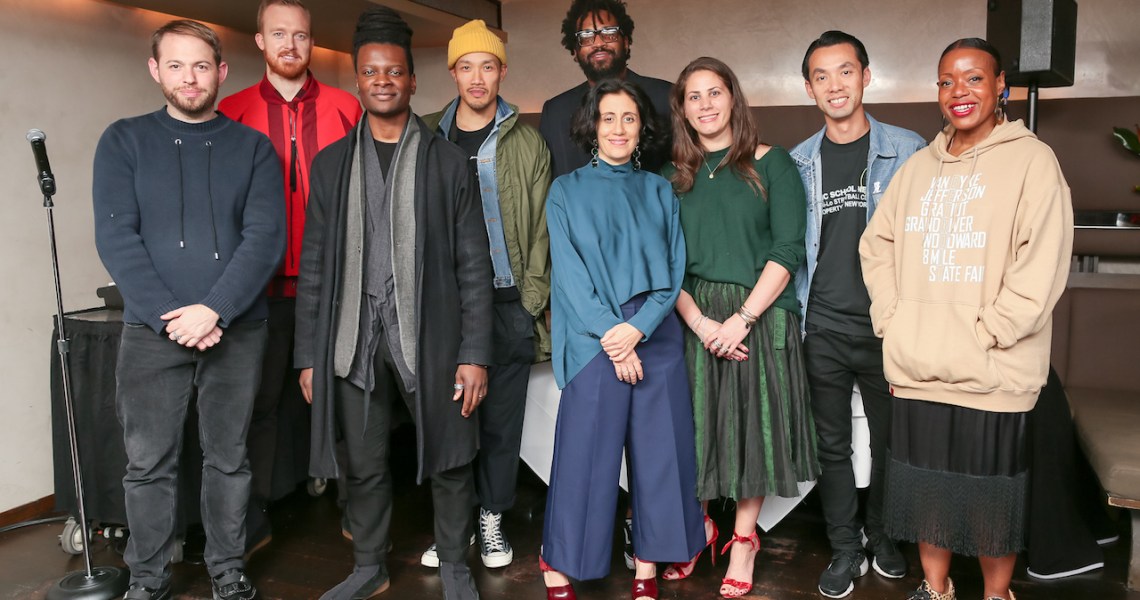The Council of Fashion Designers of America announced on Wednesday the five finalists for this year’s CFDA + Lexus Fashion Initiative, a yearly program that chooses five fashion brands focusing on sustainability and places them in a nine-month residency to improve their sustainable efforts.
The finalists – Public School, Tracy Reese, Jonathan Cohen, Abasi Rosborough and Araks – are diverse not only in the categories they cover but also in their thinking on sustainability. Some of the brands have had sustainability as a core part of their strategy from the beginning while others have only just begun to update their strategies to make it a focus.
“We’ve changed our business model to reflect our goals,” said Maxwell Osborne, co-founder of Public School. “We’ve done as much as we can to be more sustainable. We don’t do fashion shows so we don’t produce extra waste; we upcycle garments; we use deadstock; we challenge all our partners to upcycle. It’s a hard decision business-wise, but we feel great about it.”
There is one feeling that is unanimous among the finalists: There is no trade-off between sustainability and creativity or aesthetics. Instead, designing sustainably can often be even more creatively fulfilling due to the limitations it imposes.
“It’s a unique challenge,” said Abdul Abasi, co-founder of Abasi Rosborough. “We have a mystery bag every season when we look at the deadstock we are going to use. Creativity thrives in restraint. The fact that we only have certain things available means that we come up with combinations we would not have made otherwise.”
The market for sustainable fashion has grown considerably. In the 17 years since Stella McCartney first launched and proved that brands could be completely sustainable while holding legitimate fashion credibility, the number of consumers that place sustainability as a major factor in their fashion choices has risen to nearly 60 percent, a marked change from previous decades. Fashion brands like Mara Hoffman and Eileen Fisher (who recently collaborated on a sustainable collection with Public School) have made more environmentally friendly practices a priority. Younger DTC fashion brands have gone down a similar route, with Everlane pledging to eliminate all virgin plastics by 2021.
“[Fashion is] just becoming aware of our role in the environment,” said Tracy Reese, a fashion designer who has been in the business for more than 30 years. “Our industry has been strangely stagnant, doing things the same old way for decades and decades. We are in flux now. This is the biggest change that I’ve seen come about, and it’s been a very necessary change if you look at how polluting our industry is.”
These changes are not just driven by fashion designers’ guilty consciences. There is a clear desire for sustainable clothing from consumers and the brands that offer sustainable products will be tapping into that desire. A survey from Element Three showed that 87 percent of U.S. millennials would be willing to pay more for clothing that was sustainably produced. Additionally, brands that do not offer sustainable options risk being seen as out of touch and careless toward the environment.
Ad position: web_incontent_pos1
“I launched an organic line 10 years ago, and it was just a little too early,” said Araks Yeramyan, founder of her eponymous lingerie and swimwear brand Araks. “The market is definitely ready now. Five years ago, I started doing recycled swimwear, but no one was talking about it, so I didn’t talk about it. But now I notice that people are interested in it, and so I lean into it more myself.”
According to CFDA president Steven Kolb, previous years have seen sustainable fashion brands marketed separately from the rest of fashion. These brands would be set apart from those that were not explicitly focused on sustainability and marketed toward a customer specifically seeking that out. But now the market has shifted.
“A lot of people think sustainability will cost them more than it does or that it’s more difficult than it is,” Kolb said. “And beyond that, if you went into a store a few years ago, a sustainable brand might have been placed separately and marketed separately from other fashion brands. But now, so many brands are making it a natural part of their DNA. It’s not the primary characteristic of the brand; it’s just a part of the whole identity.”




